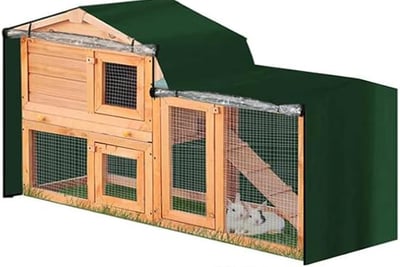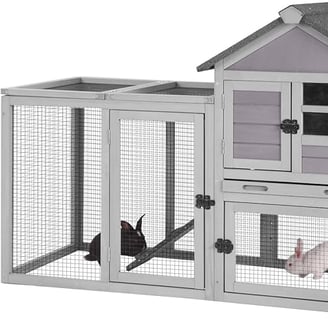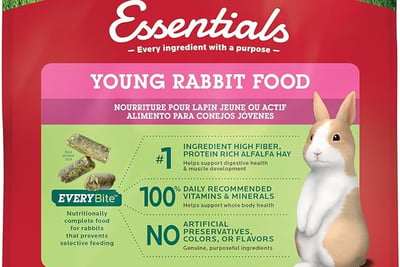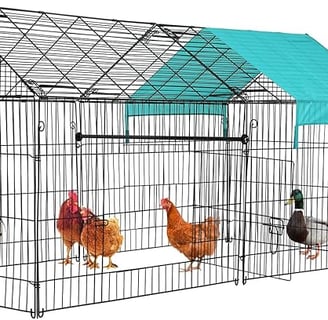Exploring the Pros and Cons of Bunnies in the Garden: A Comprehensive Guide
8 min read


Introduction to Bunnies in the Garden
Bunnies, whether wild or domestic, often emerge as a charming yet controversial presence in gardens. Their soft fur, playful antics, and adorable appearance make them immensely appealing to many garden enthusiasts. However, they also evoke mixed feelings due to their dietary habits and potential impact on plant life. Understanding their role within the garden ecosystem is vital for anyone considering the implications of inviting these creatures into their outdoor spaces.
In the garden, bunnies can serve various roles. Wild rabbits are integral to many ecosystems, acting as prey for numerous predators, contributing to nutrient cycling through their droppings, and aiding in seed dispersal. Furthermore, their burrowing behavior can aerate soil, promoting healthier plant growth. Domestic rabbits, on the other hand, are often kept as pets and, when managed properly, can coexist harmoniously among plants while providing companionship to their owners.
Despite these positive aspects, the presence of bunnies can also lead to several challenges. Their natural instinct to nibble on vegetation means that gardens are at risk of becoming a buffet for these foragers. Various plant species may struggle to thrive as a result of intense feeding pressure from rabbits, which can lead to frustration for gardeners hoping to cultivate certain blooms or vegetables. Additionally, the proliferation of wild rabbits may lead to overpopulation issues, causing further strain on local ecosystems and agricultural endeavors.
This brief overview sets the stage for a comprehensive examination of the pros and cons associated with bunnies in the garden. Delving deeper into their ecological impact, habitat preferences, and relationship with gardeners can reveal a more nuanced understanding of how to coexist with these charming yet complex creatures.
Benefits of Having Wild Bunnies in Your Garden
Incorporating wild bunnies into your garden can yield multiple advantages that not only enhance the aesthetic appeal but also contribute positively to the overall health of your garden ecosystem. One notable benefit is their role in natural pest control. Bunnies primarily feed on various weeds, grasses, and some herbs, which can help limit the overgrowth of undesirable plants. By consuming these plants, bunnies inadvertently assist gardeners in managing the landscape naturally, reducing the reliance on chemical pesticides that may harm the environment.
Furthermore, wild bunnies contribute greatly to promoting biodiversity within the garden. These small mammals share their habitat with numerous other species, creating a balanced environment. Their presence can attract predators such as hawks and foxes, which can also help control the populations of other potential pests. Moreover, bunnies are an essential part of the food web, supporting the local fauna while ensuring a healthier and more vibrant garden ecosystem.
Another significant advantage of having wild bunnies in your garden is soil aeration. Bunnies create burrows as they dig for food and construct their nests, which can lead to improved soil structure. This burrowing activity creates tiny air pockets in the soil, enhancing the aeration process. Aerated soil promotes better water infiltration and root development, resulting in healthier plants and increased productivity in the garden. As a result, the presence of bunnies can contribute to more robust crops and flourishing flower beds, ultimately benefiting garden caretakers.
In summary, allowing wild bunnies to roam freely in your garden brings forth numerous benefits, from natural pest control and promoting biodiversity to enhancing soil aeration. Incorporating these gentle creatures into your gardening practices may lead to a more harmonious and productive environment.
Advantages of Domestic Bunnies in Garden Spaces
Integrating domestic bunnies into garden spaces presents multiple advantages that can enhance both the gardening experience and the health of the plants. One notable benefit is the companionship that these gentle animals provide. Bunnies are known for their playful and sociable nature, making them delightful companions for garden enthusiasts. Their presence can make gardening a more enjoyable and fulfilling activity, as they help create a serene environment.
Furthermore, domestic bunnies significantly contribute to sustainable gardening practices by acting as natural fertilizers. Their droppings are rich in nitrogen, phosphorus, and potassium, all essential nutrients that plants require for healthy growth. Unlike synthetic fertilizers, rabbit manure can be applied directly to the garden without the risk of burning plants due to its mild nature. This organic matter not only nourishes the soil but also improves its structure, facilitating moisture retention and promoting beneficial microbial activity.
In addition to their fertilization benefits, bunnies can assist in weed management. These small herbivores are fond of consuming a variety of plants, including many species classified as weeds. By allowing bunnies to graze in garden areas, gardeners can limit the growth of undesired plants naturally. This can minimize the need for herbicides, contributing to a more eco-friendly approach to maintaining garden spaces.
Moreover, domestic bunnies can seamlessly fit into the home gardening philosophy, which often emphasizes harmony with nature. By providing shelter and a safe foraging environment, gardeners can foster a habitat that allows bunnies to thrive while simultaneously benefiting the plants. This symbiotic relationship encourages sustainable practices and enhances the overall health of the garden ecosystem.
Drawbacks of Wild Bunnies in Your Garden
While wild bunnies can bring a sense of joy and liveliness to a garden, their presence is not without challenges. Overpopulation is a significant concern, as it can lead to the rapid decimation of garden plants. A small number of rabbits may seem manageable, but their reproductive capabilities allow populations to grow exponentially in a short period. When their numbers increase, they can strip away tender greens, vegetables, and even ornamental plants, leading to substantial garden damage.
Moreover, wild bunnies can create competition with other wildlife. Many gardens serve as sanctuaries for various animal species, and the introduction of a thriving rabbit population can disrupt the delicate balance of this ecosystem. Bunnies may consume resources such as food and water, leaving limited supplies for other small animals. This competition can also lead to biodiversity loss, as some native species may struggle to survive in an environment increasingly dominated by rabbits.
In addition to competition and overpopulation, wild bunnies pose a risk of transmitting diseases. They can carry parasites and illnesses that may affect not only their health but also the well-being of other animals and even humans. For instance, tularemia, a potentially serious bacterial infection, is associated with rabbits. Furthermore, mites, ticks, and fleas from wild bunnies can infest garden areas, spreading to pets or humans who come into contact with these infected creatures. Therefore, potential disease transmission highlights the importance of maintaining a healthy balance in your garden.
In summary, while appreciating wildlife is essential, it is crucial to recognize the potential drawbacks of having wild bunnies in the garden. Overpopulation, competition with other wildlife, and risks of disease transmission are significant considerations that homeowners should take into account when managing their outdoor spaces.
Challenges with Raising Domestic Bunnies in Gardens
While integrating domestic bunnies into a garden setting can be rewarding, it is imperative to understand the various challenges that may arise. One significant concern involves the need for adequate shelter. Bunnies require a secure and comfortable living space to thrive, safeguarding them from harsh weather conditions and potential predators. This shelter must be strategically positioned within the garden to provide both protection and a sense of security for the animals.
Additionally, dietary requirements should be considered carefully. Bunnies have specific nutritional needs, which include a constant supply of fresh hay, vegetables, and water. Relying solely on the garden’s offerings may lead to dietary deficiencies or digestive issues. Thus, a supplementary feeding plan must be established, ensuring the bunnies receive balanced nutrition while preventing overconsumption of garden plants that may not be suitable for them.
Another pertinent issue is the potential for garden damage. Domestic bunnies have a natural inclination to dig and nibble, which can disrupt garden aesthetics and harm various plant species. Without proper supervision or fencing, bunnies may contribute to the destruction of flowers, vegetables, and shrubs, leading to frustration for garden enthusiasts. Implementing barriers such as raised beds or protective fencing can mitigate this risk but may require considerable effort and investment.
Training and socialization are also crucial for successfully integrating bunnies into a garden environment. Domesticated rabbits need to be familiarized with their surroundings and encouraged to exhibit appropriate behavior. This process can be time-consuming, as bunnies must learn to avoid specific plants and areas. Moreover, the impact of their presence on garden aesthetics should not be overlooked; continuous digging or chewing can alter the desired visual appeal of any garden. Understanding and addressing these challenges is vital for anyone considering raising domestic bunnies in their gardens.
How to Manage Bunnies in Your Garden Effectively
Managing bunnies in your garden requires a blend of strategies that cater to both domestic and wild rabbits. One of the most humane methods for deterring wild bunnies is the use of natural repellents. Products containing scents that are unpleasant to rabbits, such as garlic, hot pepper powder, or commercial rabbit deterrent sprays, can be effective when applied around the perimeter of the garden. Regular reapplication will enhance efficacy, especially after rainfall.
In addition to deterrents, physical barriers like fencing can serve as a crucial component in safeguarding your plants. A fence should ideally be at least two to three feet high and buried at least six inches underground to prevent digging. Utilizing materials such as chicken wire or hardware cloth can provide a robust solution against bunny intrusions. Make sure any gaps or openings are secured, as even small spaces can be an invitation for curious rabbits.
Creating a balanced environment is equally important. Consider planting specific crops that are less enticing or harmful to rabbits. For instance, they generally avoid herbs like lavender or rosemary. Additionally, providing designated areas with plants that rabbits enjoy can help lure them away from your primary garden. This method not only keeps them occupied but also contributes to maintaining a healthy ecosystem.
It's essential to understand the behavior of bunnies, as they will often seek cover and shelter. By leaving some areas of your garden more natural, with tall grass or brush piles, you can encourage rabbits to stay in these zones rather than feasting on your tender vegetables. Finding a harmonious balance between encouraging the presence of bunnies while protecting your garden plants is vital to managing bunnies effectively. Such methods will help cultivate a garden that can coexist with wildlife while minimizing damage to your cherished plants.
Conclusion: The Bunny Dilemma in Gardening
Throughout this comprehensive guide, we have delved into the multifaceted relationship between gardeners and bunnies, highlighting both the positive and negative aspects of having these animals in the garden. Bunnies, known for their charming demeanor, can serve as beneficial allies by aiding in pest control and enriching the soil through their natural behaviors. Their presence can foster a balanced ecosystem, contributing positively to the garden's overall health.
However, it is equally important to acknowledge the challenges that bunnies can pose. Gardeners often face the dilemma of dealing with these animals as they can cause considerable damage to plants by nibbling on delicate foliage and young shoots. This can lead to frustration, especially for those who invest time and effort into cultivating their gardens. The dual nature of bunnies as both helpers and potential nuisances necessitates careful consideration and strategy from gardeners.
The takeaway message from this exploration is the significance of informed decision-making when it comes to coexisting with bunnies in gardening endeavors. Understanding the behaviors and preferences of bunnies can enable gardeners to create an environment that encourages beneficial interactions while minimizing destructive tendencies. This may involve employing fencing, planting bunny-friendly plants away from sensitive areas, or even educating oneself about the local bunny population to devise the most effective approach for maintaining harmony.
In conclusion, the relationship between gardening and bunnies is intricate and requires thoughtful management. By weighing the pros and cons, gardeners can make choices that align with their goals while recognizing and respecting the role of these lovable creatures in the garden ecosystem.











